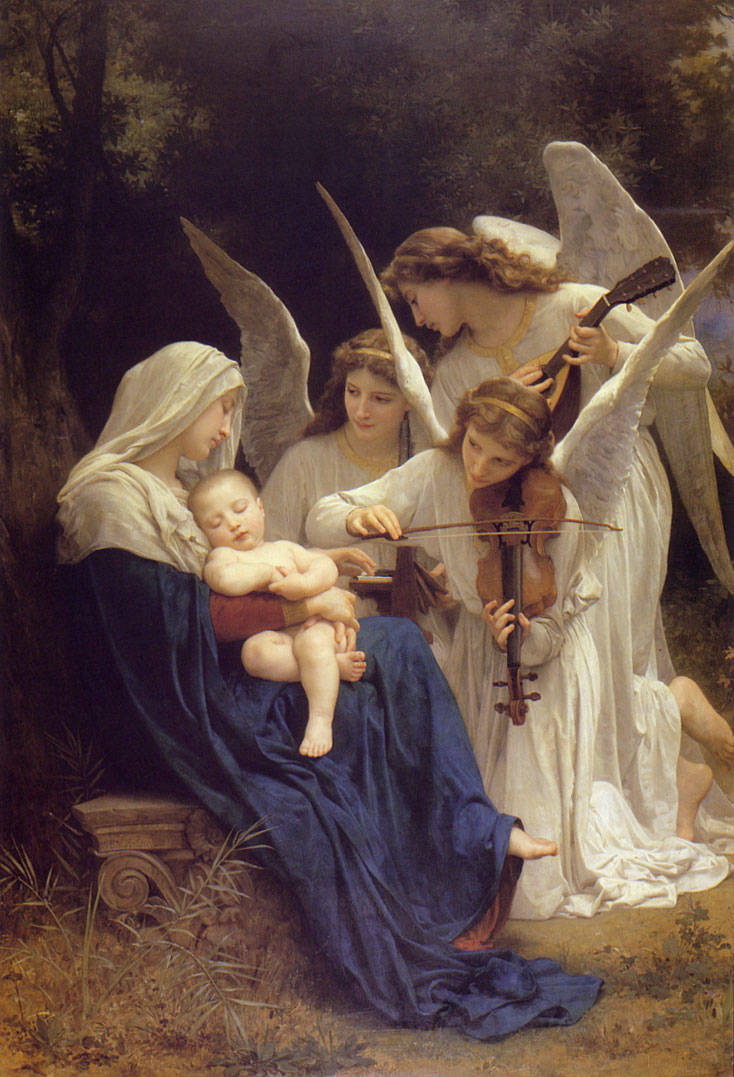Choosing Sides
“No one would think to add Abstract Expressionist painting to a list that includes fast food and Walt Disney products. Nevertheless, the work of such artists as Jackson Pollock, Mark Rothko, and Willem de Kooning wound up as part of a secret CIA program during the height of the Cold War, aimed at promoting American ideals abroad.”
—Josh Jones
*****
Impressionism triumphs over Academic Art; Abstract Expressionism displaces Regionalism—I would argue successful art movements rely less on artistic quality and more than is generally thought on being in synch with the social, civic, or political climate of the eras in which they flourish.
Qualitatively comparing William-Adolphe Bouguereau and Claude Monet is like comparing apples and oranges. But which of the two have most people heard of today—which artist can be relied on by museums to lead to blockbuster attendance?
Art historically, Impressionism is heralded as precursor to Modernism—an age of individualistic triumph, freedom and democracy—an age in which artistic limits are lifted and all becomes possible.
And to whom do we owe Monet’s and Modernism’s preservation? Simply put, industrial capitalists—the “self made men” who saw in the art and its making a reflection of their own self-determined paths to limitless success. Monet’s paintings became capitalist trophies.
Need I point out that the rise of Abstract Expressionism aligns perfectly with the United States’ post-World War II defeat of totalitarianism—is there anything more emblematic of American values and triumphalism than a drip painting by Jackson Pollock?
Artistically, I am wild about Monet and Cezanne, de Kooning and Pollock. But I accept their place among the pantheon of greats is as much a factor of historical accident as artistic achievement. The times made them and their legacies; they did not make their times.
And in what time do we now live?
Look around Baltimore, look around the world: growing inequities, rising temperatures, diminishing resources. A post-9/11 world is one rich in uncertainty, insecurity, and disparity. We live in an age where the “haves” are nervous and the “have-nots” increasingly desperate.
I have been in more rooms than I can count that are filled with artists and arts leaders wringing their hands over the state of culture—the lack of appreciation and support for the arts; the travesty of cuts in funding; the outrage that artists are unable to make a living by making art. So much expended time and energy around the question: how to get people to choose art?
Art people asking others to choose art betrays what I believe is a fundamental blind spot: the world today is not the same as it was yesterday.
Within the art world, Modernism’s tenets stick like a hangover: an avant-garde mentality of esoteric innovation, faith in individual genius, art as an autonomous world unto itself, and so on. Choosing these values is fine—just as it’s fine that Edward Hopper was making his paintings during the height of Abstract Expressionism—but not if the arts community wants to be relevant to the issues that most concern our culture today.
Absent from too many art practices are the values of “supporting equity” or “serving social good” or “empowering community”… and categorizing these values as art values is even a rarer find amongst arts aficionados. Until these sorts of values enter the art mainstream, asking people to choose art—in this day and age—is like asking a hungry child to read a book.
There are social, civic, and political rumblings afoot that we—artists—cannot control; the more we accept and bend to that reality, the better chance we have of surviving and thriving—of having our work as artists achieve genuine relevance not in defiance of the times, but in step with it.
Think Peggy Diggs and her work addressing violence against women, or Liz Lerman’s Healing Wars, or Paul Rucker’s work on prison issues—artists for whom aesthetic standards and social impact are fully intertwined. Consider Navasha Daya’s and Fanon Hill’s work with Youth Resiliency Institute, or Bashi Rose and his practice as an OSI Fellow, or Marshall Clarke carrying on as a professional photographer while also serving as Executive Director of Access Art—artists driven by conviction that they themselves are not whole (or wholly of their time) were it not for choosing to pair artistic pursuit with community involvement through art.
If we long for connection, what are we doing to attain it? With whom and for whom are we engaging? How do we expect to matter if our practice remains so parochially proscribed within an art tribe? Unless we clue in, we are doomed to, at best, loiter in the margins of civic life. I believe art is too valuable a construct for that to be its fate.



